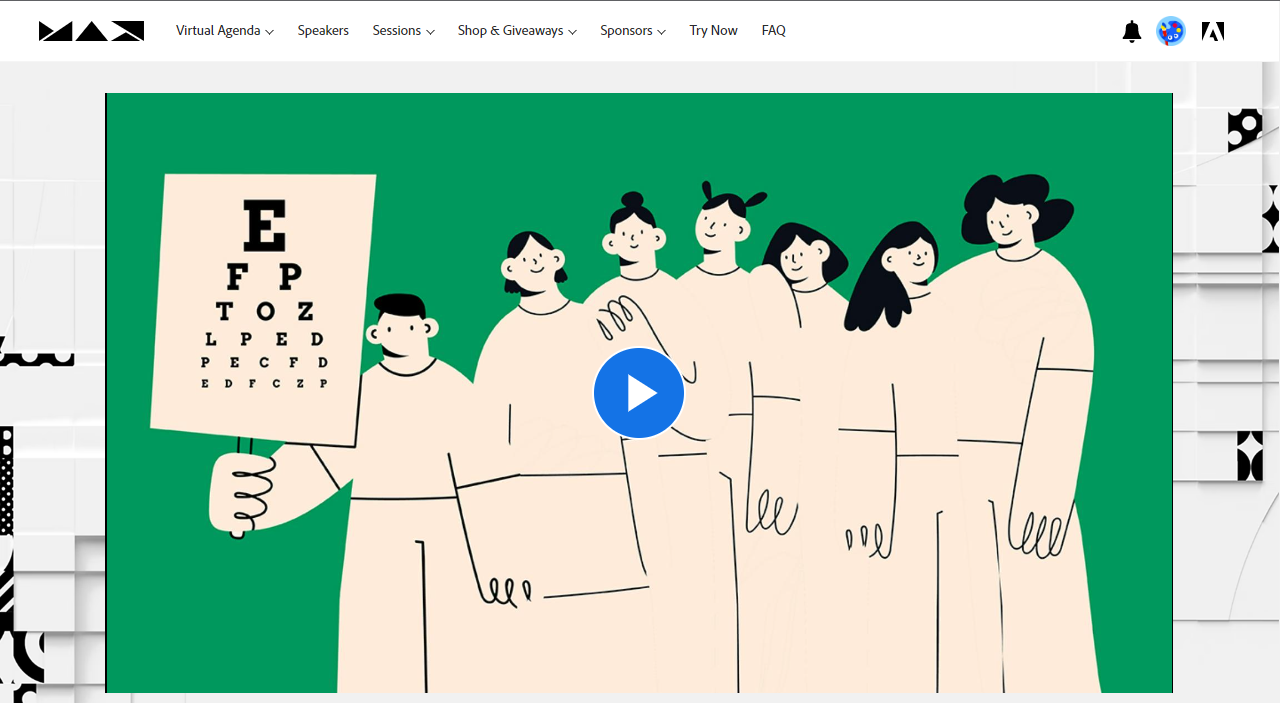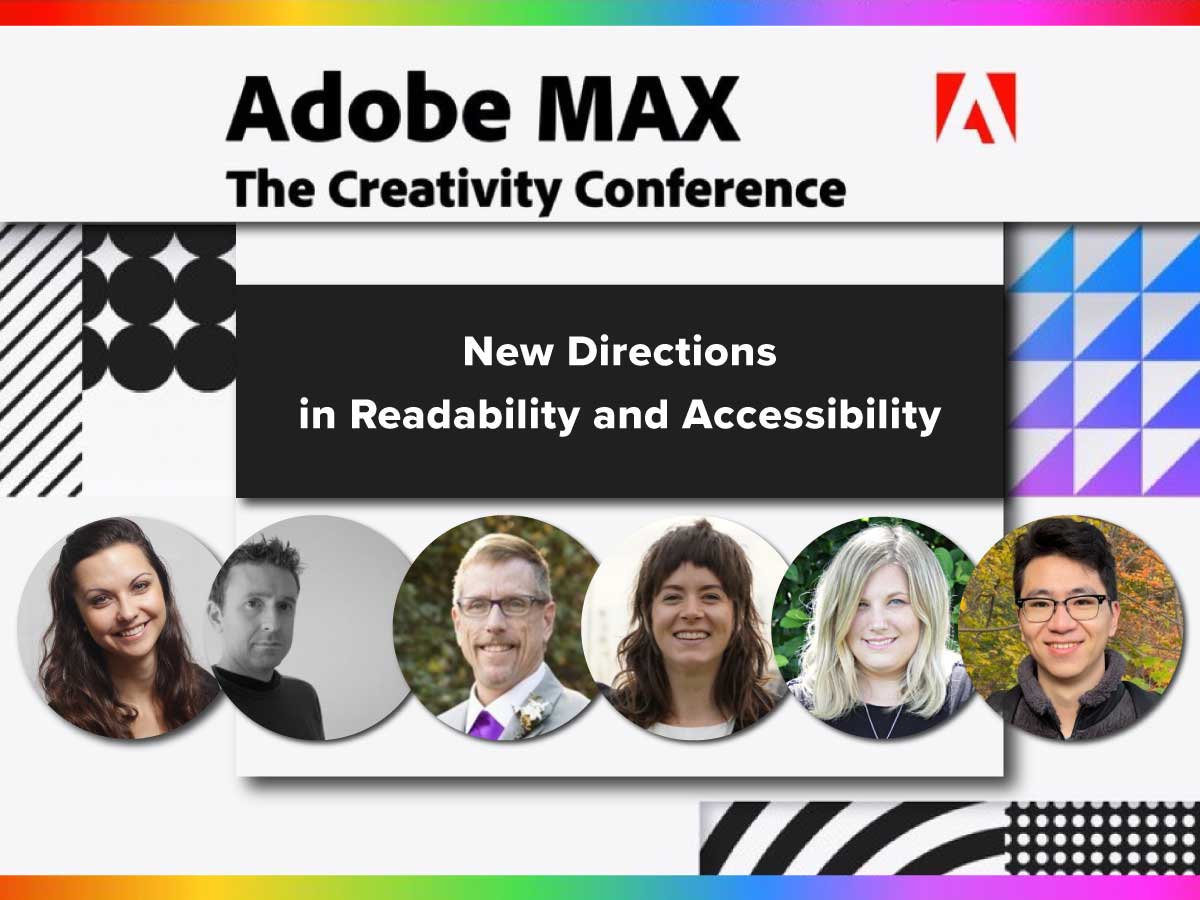New Directions in Readability and Accessibility
Adobe MAX, 2022
Every year Adobe holds a huge event in Los Angeles, simulcast to the world, called Adobe MAX, where it announces the latest big updates to its industry-leading software. This year’s conference included 6,000 attendees in Los Angeles and another several thousand attending virtually. And, once again, better reading was on the agenda.
The “New Directions in Readability and Accessibility” session was viewed by 8,000 participants and counting, they heard from a panel of speakers highlighting a variety of new tools, experiments and features, all with the goal of enabling better user outcomes with digital content.
Zoya Bylinskii, Ph.D., Adobe Research Scientist, set the context and hosted the session. Session highlights included new Acrobat Reader tools for dyslexic readers, designing for color-blind audiences, improving the accessibility of PDFs, using personalized reading settings to tailor reading experiences and improve reading outcomes, and the latest research on how personalized text formats impact reading in children. Watch the session to hear more from:
- Bernard Kerr on Adobe’s color tool to help designers avoid creating content difficult for those with color blindness (00:57)
- Rob Haverty on creating accessible PDFs (04:44),
- Aleena Niklaus on digital reading rulers (09:14),
- Dr. Stephanie Day, University of Central Florida, on better readability in the classroom (13:20)
- Tianyuan Cai on using AI to predict better fonts for readers (17:36)
Important for Readability
Zoya introduced Tianyuan Cai’s reading experiments with adult readers, noting that his work is “proving how incredibly individualized reading preferences and performances are.” Tian described the exciting use of AI to predict the best font for readers. He notes that font and reader characteristics, including age, interplay to determine which font works best for each. He reports on the work’s potential and the need for further study. According to Tian, the model they created to predict the fastest font for individuals generated an average 26-word-per-minute gain over the reader’s preferred font. He notes, however, that the model is still 46 words per minute slower than the empirically fastest fonts based on the speed tests conducted. There is more work to be done, but this study is a critical step forward in predicting better reading formats for individuals.
Content publishers will be interested to hear from Rob Haverty on Adobe’s forthcoming AI-based Auto-tag API. This functionality is critical for screen readers, as Rob describes. Tagging is also critical for the proper handling of PDFs when using Adobe Liquid Mode to reflow text on mobile devices and adjust reading settings for better readability.
Stephanie Day, Ph.D. from the University of Central Florida, addresses the question, “Should we personalize students’ reading formats?” Yes! Stephanie describes early findings and the research work yet to be done to ensure better and more equitable reading in the classroom.
Additionally, Bernard Kerr explains the prevalence of color blindness and the new Adobe tool designed to help content creators avoid using colors that are difficult to distinguish by those impacted. And Aleena Niklaus explains early work on reading rulers that can help readers, including dyslexic readers, gain reading speed.
Click to watch the session (registration is free)
Adobe MAX Session: New Directions in Readability and Accessibility

ABOUT THE SESSION
Everyone has different eyes and a different brain. And now, designers have the ability to tailor consumption experiences for those differences. In our session on inclusive design and accessibility, join Zoya Bylinskii, Research Scientist in the Creative Intelligence Lab at Adobe, as she shares the latest research and features around reading and design.
You’ll learn about:
- The latest findings from our Readability Research team on how personalized reading settings for individuals improve reading outcomes
- New tools soon to be available in Acrobat and Reader for dyslexic readers
- The latest research into tooling for making sure your designs accommodate color-blind audiences
- New tools for making PDFs more accessible

About Adobe MAX: Adobe MAX is the world’s leading creative conference. This year it was both back in person in Los Angeles and also virtual on October 16–20, 2022. Attendees got inspired, learned new skills, and connected with other creatives during three days of sessions and labs, keynotes, Sneaks, and more.




